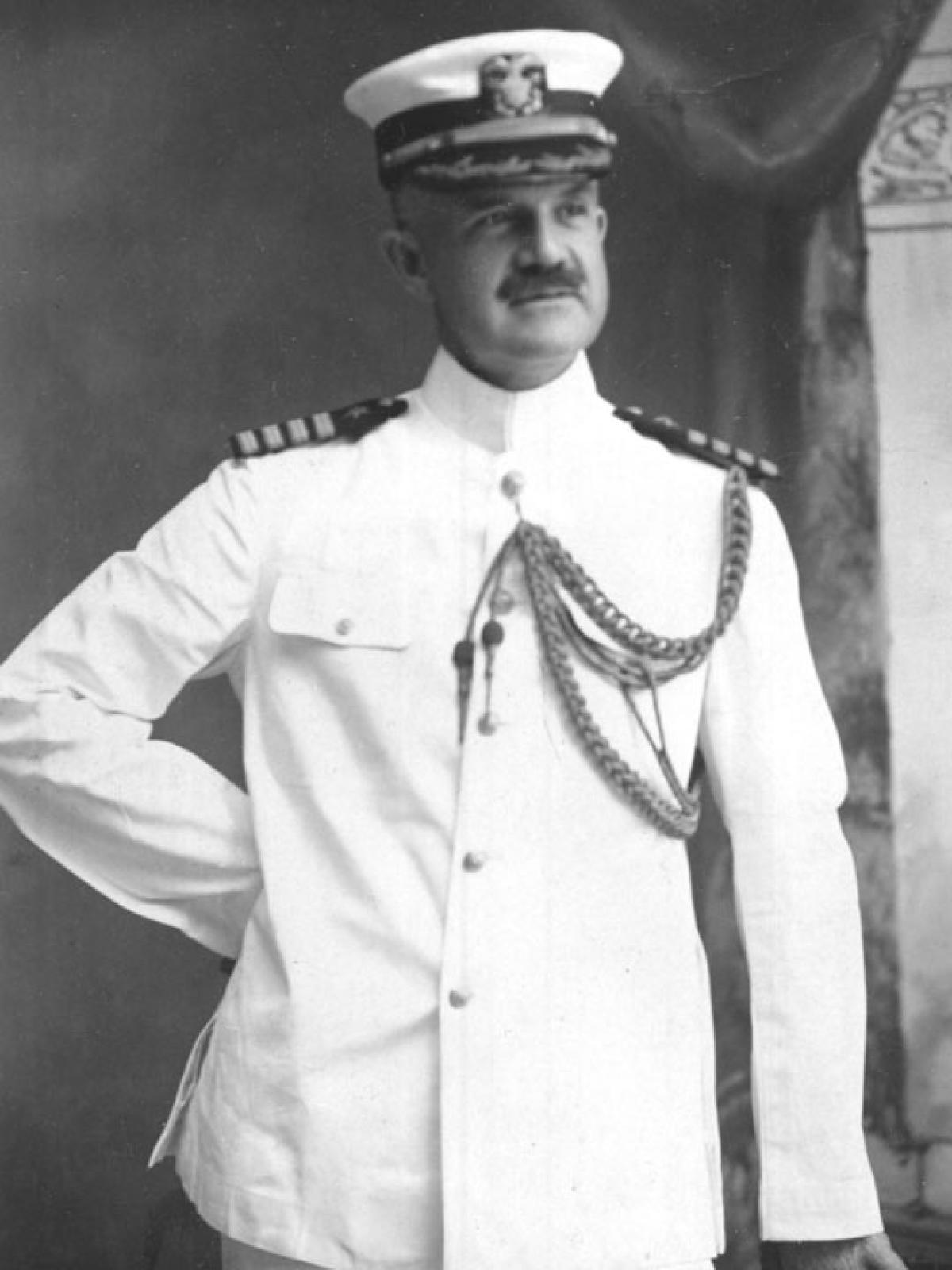Digitizing Proceedings
.S. naval officers adopted the double-breasted uniform jacket that reflected men’s clothing styles of the period and is still worn today. More transient changes were found in national policy. With the world war at an end, America’s civilian leadership changed course in 1921-22, halting the plan to build a “navy second to none.” President Warren Harding and Secretary of State Charles Evans Hughes turned to international agreements among the world’s five major naval powers to stop the naval arms race. Harding’s successors, Calvin Coolidge and Herbert Hoover, carried the policy forward through the decade.The monthly issues of Proceedings looked like many another American professional journal of the era. Each issue had a beige paper cover with the title and table of contents printed on it in blue ink. The unchanging images on each cover were the seals of the U.S. Naval Institute and the U.S. Naval Academy printed in gold, equal in size and side by side. At the Institute’s annual meeting in 1923, it was announced that the design of the two seals would be changed, as both were stylized adaptations, not exact copies, of the official seals. The corrected versions first appeared on the January 1924 cover. Book reviews and notes on foreign navies became regular features as issues became substantially longer, increasing from 75 to more than 100 pages. In January 1927, the size of the journal increased by half an inch in both height and width, allowing for even more text in double columns and between narrower margins.
Looking through the bound copies of Proceedings for the 1920s, one finds a trove of material worth reading today. In noting the 50th anniversary of the Naval Institute in October 1923, Roy C. Smith Jr., wrote, “. . . with the possible exception of the War College at Newport, no other source has so greatly furthered the material development and professional advancement of the Navy than has the Naval Institute.”
The Naval War College itself is featured in several issues, with Reginald Belknap’s article on the college’s Strategy Department in April 1922, and Admiral William Sims’s graduation address of that same year. In addition, Army Major J. M. Scammel wrote a piece on military genius and the Naval War College in 1924, and Rear Admiral William Veazie Pratt provided an update on developments at the college in 1927.
There were a large number of articles on naval history. In 1921, Marine Corps historian Edwin McClellan wrote an interesting piece on the origin of the Marine Corps Band and its first major performance at the inauguration of President Thomas Jefferson in 1801. In 1923, Mary Hannah Krout, a well-known feminist and newspaper reporter, became the first known female to contribute to Proceedings with her account of Perry’s expedition to Japan. The most valuable historical pieces were those contributed by participants who provided primary source materials. In 1923, S. Dana Greene’s 1862 letter to his mother was published, recounting the USS Monitor’s stormy passage to Hampton Roads and her subsequent battle with the CSS Virginia, during which he took over command. In addition, Charles O’Neill’s account of the engagement between the USS Cumberland and Virginia appeared in 1922, and John C. Watson’s memoir of his time as aide to Admiral Farragut was published in 1927, including Watson’s recollection of Farragut’s famous exclamation: “Damn the Torpedoes . . . .” For the Spanish-American War, Captain Edward L. Beach Sr. contributed a memoir in 1920 of the Battle of Manila Bay from his perspective in the USS Baltimore, and Marine Lieutenant Dion Williams, from the same ship, published his reminiscences in 1928. In 1927, Joseph K. Taussig wrote about experiences in the Boxer Rebellion.
Memoirs and reflections on the most recent conflict dominated. Holloway Frost continued his long series of studies on Jutland that were a prelude to his important 1927 book. C. S. Alden, a Naval Academy professor of English, provided a detailed two-part article in 1920 on the various wartime missions undertaken by U.S. submarines. Taussig contributed a six-part report in 1922-23 that explained the roles of destroyers during World War I. In 1922, W. A. Edwards wrote a brief but accurate summary of U.S. naval aviation in 1917-18. Yates Stirling Jr., wrote on the Naval Transport Force in 1925. Two reports by German officers on submarine operations were translated in 1926, and an article on the Coast Guard’s role in the war appeared in 1929.
Among contemporary events, both disarmament and aviation were prominent themes throughout the decade. The U.S. Navy’s humanitarian mission in Japan after an earthquake was recounted in 1925. Other significant articles included Ernest J. King’s report on the salvage of the submarine S-51 in 1927, Roy Smith’s report from Nanking, and Chester Nimitz on NROTC. During the 1920s, the Chief of Naval Operations and the Commandant of the Marine Corps first contributed to Proceedings. Among others who wrote on enduring subjects, Army Captain J. M. Scammell wrote on a combined staff in 1921, Ernest J. King provided tips on maintaining discipline in 1923, W. S. Pye published a multipart article on joint operations in 1925, and Dudley Knox wrote on the Navy’s vanishing history and traditions in 1926.
The 1920s saw the Naval Institute Proceedings reach a new level of professional maturity with a wide range of articles on the Navy’s past, present, and future. In this decade, contributions came from the full range of the active-duty officer corps as well as the Navy’s secretariat, retired officers, and officers from other services and countries. It truly served as the professional journal of the Sea Services.




